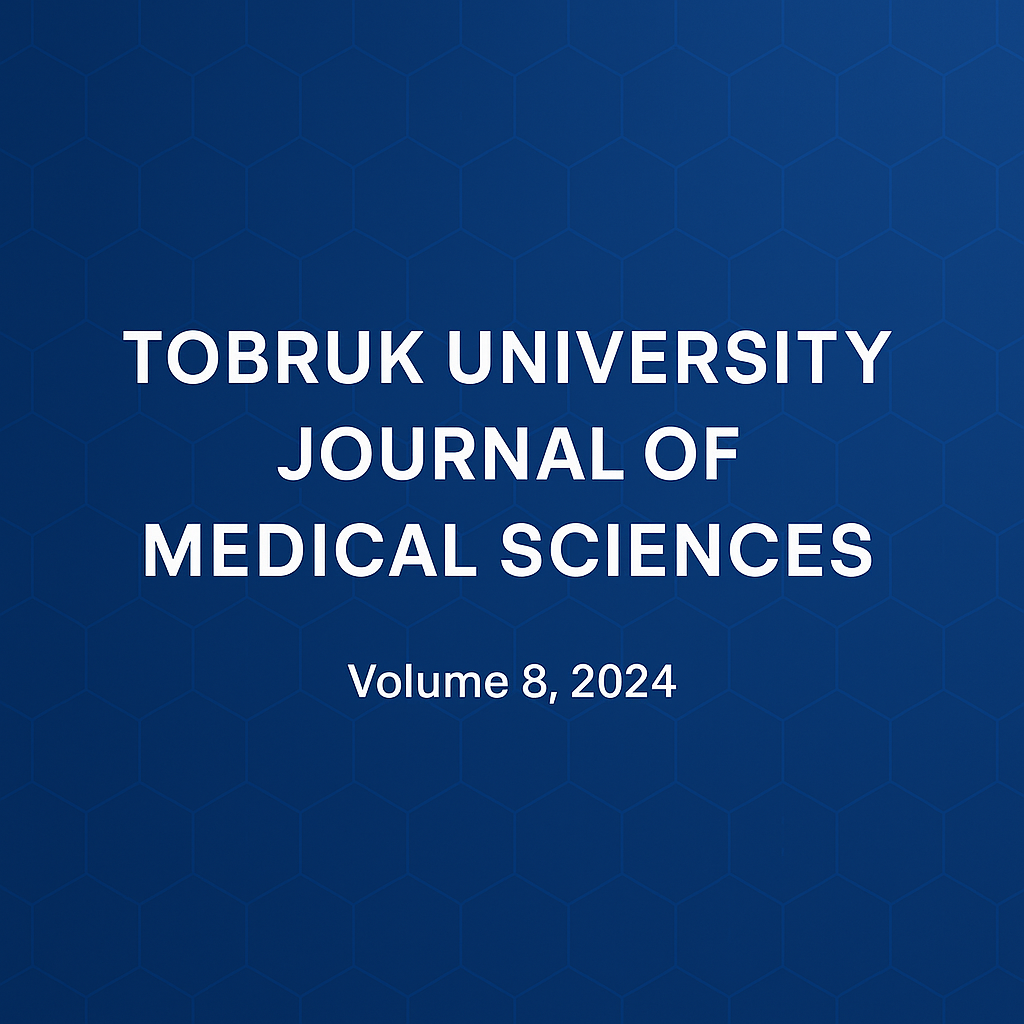Prevalence, Epidemiological Pattern and Causative Pathogen of Urinary Tract Infection Among Children Admitted to the Pediatric Department of Tobruk Medical Center
DOI:
https://doi.org/10.64516/ncdjd135Keywords:
Urinary tract infections, children, risk factors, Antibiotic ResistanceAbstract
Background: Urinary tract infections (UTIs) are common in pediatric populations and are among the most prevalent bacterial diseases worldwide, particularly in infants and young children, making them a significant pediatric health concern1. UTIs can manifest with varying degrees of severity and can be caused by a spectrum of pathogens. UTIs are particularly important to address because when they affect the upper urinary tract, they can form scars that damage the growing kidney and predispose individuals to hypertension and chronic kidney disease 3.
Patients and Method: To estimate the prevalence of urinary tract infection (UTI) and to determine the causative pathogens among children admitted to the pediatric department at Tobruk Medical Center, a retrospective study design was employed. pediatric patients admitted between August 2022 and August 2023 were reviewed. Out of 775 patient urine samples submitted for culture and sensitivity testing, 40 patients with a confirmed diagnosis of UTI were identified based on documented clinical symptoms, and laboratory findings. Descriptive statistics were utilized to analyze the prevalence rates of UTIs and the distribution of causative pathogens among the study population.
Result: 775 patients with complaints of UTI and associated risk factors were analyzed. Among these, 40 samples tested positive for UTI, while 735 had negative urine cultures. The overall prevalence rate of UTI was 5.2%. Out of the 40 positive cases, 31 cases (77.5%) were attributed to gram-negative bacteria, while 9 cases (22.5%) were attributed to gram-positive bacteria. Among the gram-negative bacterial isolates, Escherichia coli was the predominant pathogen, accounting for 51.5% of cases, followed by Klebsiella at 12.5%.
Conclusion: This study enhances the understanding of the prevalence, epidemiological characteristics, and causative pathogens of pediatric UTIs in Tobruk, offering critical insights for improving diagnosis, treatment, and prevention strategies in pediatric healthcare. So that, healthcare providers can better manage UTIs in children, ultimately improving patient outcomes.
References
1. Ghorashi, Z., Ghorashi, S., Soltani-Ahari, H., & Nezami, N. (2011). Demographic features and antibiotic resistance among children hospitalized for urinary tract infection in northwest Iran. Infection and drug resistance, 171-176.
2. Sabih, A., & Leslie, S. W. (2021). Complicated Urinary Tract Infections.[Updated 2021 Aug 12]. StatPearls [Internet]. Treasure Island (FL): StatPearls Publishing
3. Rees, L., Bockenhauer, D., Webb, N. J., & Punaro, M. G. (2007). Paediatric nephrology. Oxford university press.10;142.
4. Shaikh, N., et al. (2008). Prevalence of urinary tract infection in childhood: A meta-analysis. Pediatric Infectious Disease Journal, 27(4), 302-308.
5. Robinson, J. L., et al. (2014). Urinary tract infections in infants and children: Diagnosis and management. American Family Physician, 90(8), 451-457.
6. Flores-Mireles AL, Walker JN, Caparon M, Hultgren SJ. Urinary tract infections: epidemiology, mechanisms of infection and treatment options. Nat Rev Microbiol. 2015 May;13(5):269-84.
7. Ammenti, A., et al. (2020). Diagnosis and management of urinary tract infection in children: Recommendations of the Italian Society of Pediatric Nephrology. Journal of Pediatric Nephrology, 35(2), 215-226.
8. Marcdante, K., & Kliegman, R. M. (2023). Nelson essentials of pediatrics. Elsevier Health Sciences.16;434.
9. Zorc, J. J., et al. (2005). Diagnosis and management of pediatric urinary tract infections. Clinical Microbiology Reviews, 18(2), 417-422.
10. Garout, W. A., et al. (2015). The epidemiology of urinary tract infections and the associated causative organisms among children in a Saudi Hospital. Journal of Infection and Public Health, 8(2), 225-2
11. Ali, E., & Osman, A. (2009). Prevalence of urinary tract infection among Sudanese children. Journal of Pediatric Nephrology, 24(7), 1503-1508.
12. Albarrak, M., Al Dabbagh, M., Al Hashami, H., Alzomor, O., Ghatasheh, G., Habashy, N., ... & Pérez-López, A. (2023). Urinary tract infections in children from the Gulf Cooperation Council countries: a literature review (2011–2022). Frontiers in Pediatrics, 11, 1163103.
13. Hannan TJ, Totsika M, Mansfield KJ, Moore KH, Schembri MA, Hultgren SJ. Host-pathogen checkpoints and population bottlenecks in persistent and intracellular uropathogenic Escherichia coli bladder infection. FEMS Microbiol Rev. 2012 May;36(3):616-48.
14. Leung, A. K., Wong, A. H., Leung, A. A., & Hon, K. L. (2019). Urinary tract infection in
children. Recent patents on inflammation & allergy drug discovery, 13(1), 2-18.)
15. Saeed, A., Hamid, S. A., Bayoumi, M., Shanan, S., Alouffi, S., Alharbi, S. A., ... & Abd, H. (2017). Elevated antibiotic resistance of Sudanese urinary tract infection bacteria. EXCLI journal, 16, 1073.
16. Ozkaya-Parlakay, Aslinur; Polat, Meltem.( 2020 August) Antibiotic Stewardship in Urinary Tract Infection in Pediatrics. The Pediatric Infectious Disease Journal 39(8):p e218-e219.












